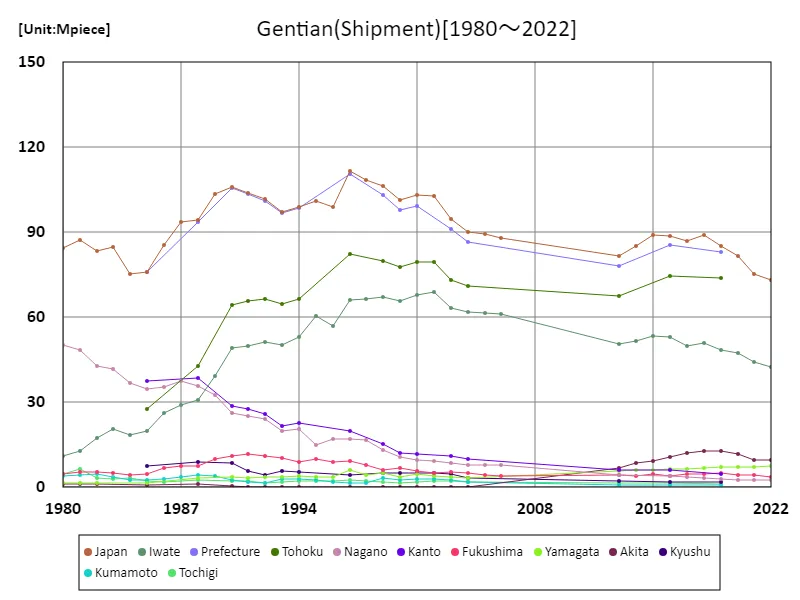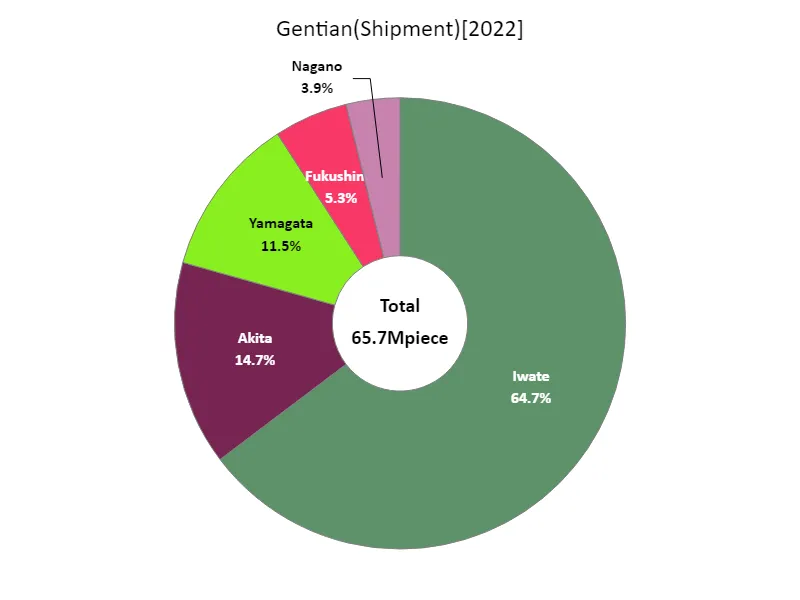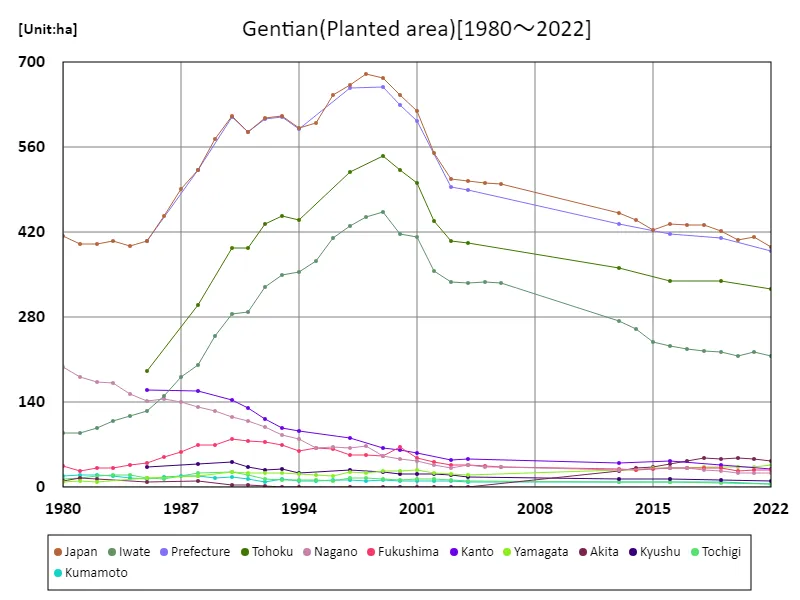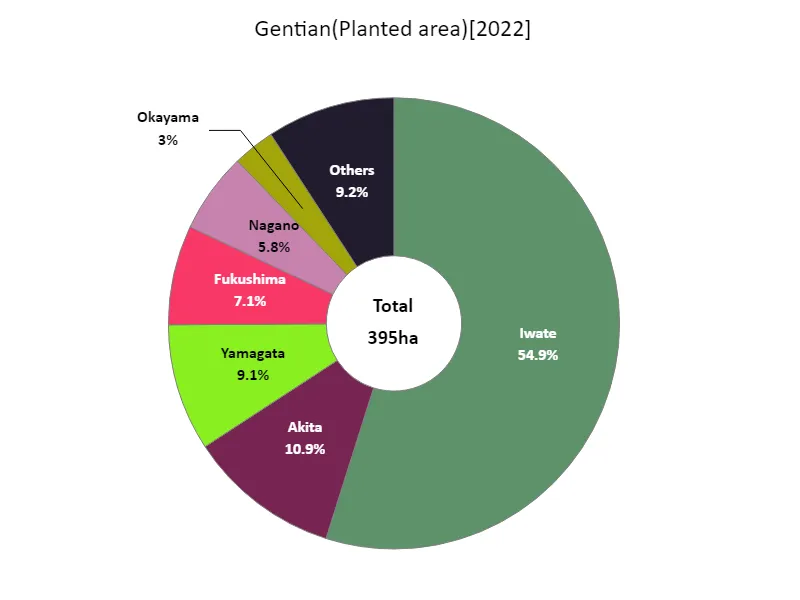Abstract
Gentians have seen a steady increase in both shipping volume and cultivated area in Japan. As of 2022, the shipping volume reached a record high of 73.1 million bottles, reflecting growing demand. The cultivated area also peaked at 396 hectares, signaling expanding production. Historically, gentian cultivation has been concentrated in regions like Hokkaido and Nagano, known for their cool climates, which suit the flower’s growth. The increase in shipping volume and cultivated area highlights gentians’ popularity as a high-value cut flower, with both domestic and export markets contributing to this trend.
Gentian shipping volume (main data).
Gentians in Japan experienced their peak shipping volume in 1997, reaching 112 million trees. Since then, the shipping volume has declined, and as of 2022, it stands at 65.5% of the peak level, with 73.1 million bottles shipped. This decrease reflects a shift in consumer preferences and market dynamics, with gentians now competing with a wider variety of flowers. However, gentians remain a popular choice for their vibrant color and long shelf life. The cultivation area has adjusted accordingly, focusing on maintaining quality and meeting the specific needs of both domestic and export markets.


The maximum is 112Mpiece[1997] of Japan, and the current value is about 65.5%
Gentian shipping volume (by prefecture).
As of 2022, Iwate Prefecture leads Japan in cut flower shipments, with a total of 42.5 million flowers, the highest nationwide. This strong performance is largely attributed to Iwate’s favorable climate and expertise in flower cultivation, particularly in varieties like carnations and lilies. Over the years, Iwate has maintained its position as a key supplier, contributing significantly to the domestic market and export sectors. Other prefectures also show growth in specific flower types, but Iwate’s consistent output highlights its central role in Japan’s cut flower industry.


The maximum is 42.5Mpiece of Iwate, the average is 13.1Mpiece, and the total is 65.7Mpiece
Gentian cultivation area (main data).
Gentian cultivation in Japan reached its peak in 1998, with a cultivated area of 680 hectares. Since then, the area has decreased, and as of 2022, it stands at 58.2% of the peak level, with approximately 396 hectares in production. This decline reflects changing market conditions and a shift in consumer preferences toward other flowers. Despite this, gentians remain valued for their striking colors and long vase life, with production concentrated in regions like Hokkaido and Nagano, where the cool climate supports their growth. Efforts are underway to maintain quality and cater to niche markets both domestically and internationally.


The maximum is 680ha[1998] of Japan, and the current value is about 58.2%
Gentian cultivation area (by prefecture).
As of 2022, Iwate Prefecture leads Japan in cut flower cultivation, with 217 hectares dedicated to flower production, the largest area nationwide. Iwate’s success is driven by its suitable climate and expertise in growing popular varieties like carnations and lilies. Over the years, Iwate has maintained its dominant position, reflecting its strong agricultural foundation. While other prefectures also contribute significantly to the cut flower industry, Iwate’s consistent expansion highlights its importance in both the domestic and export markets for cut flowers.


The maximum is 217ha of Iwate, the average is 16.5ha, and the total is 395ha



Comments